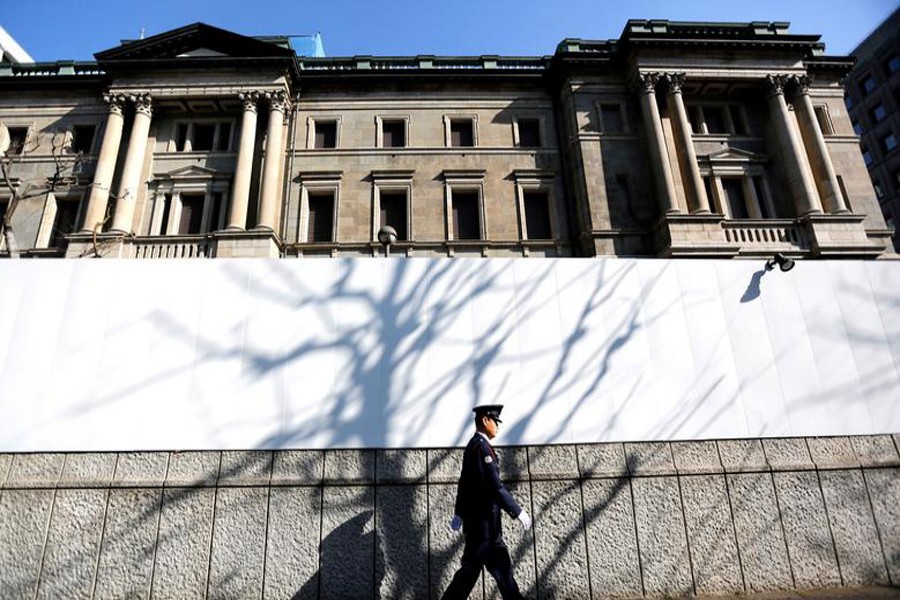The Bank of Japan kept monetary policy steady on Thursday as expected but offered a stronger signal it may cut interest rates in future, underscoring its concern that overseas risks could derail the country’s fragile economic recovery.
The decision came hours after the US Federal Reserve lowered rates again on Wednesday but signaled a pause in further cuts unless the economy took a turn for the worse.
The BOJ, which has far less policy ammunition, kept its short-term rate target at -0.1 per cent and that for the 10-year government bond yield at around 0 per cent.
It also maintained a pledge to buy government bonds so its holdings increase at an annual pace of roughly 80 trillion yen ($736 billion).
But the BOJ modified its forward guidance - a signal central banks give to markets on future policy moves - to indicate more clearly its readiness to cut rates if needed.
“The BOJ expects short- and long-term interest rates to remain at present or lower levels as long as needed to pay close attention to the possibility that the momentum toward achieving its price target will be lost,” the central bank said in a statement announcing its policy decision.
That compared with the previous language that committed to keep “current ultra-low rates for an extended period of time, at least until the spring of 2020.”
“The BOJ wanted to maintain expectations among the market that further easing is still a possibility,” said Masaaki Kanno, chief economist at Sony Financial Holdings.
“This basically means the BOJ would be ready to cut rates if the global environment deteriorates.”
The vote on keeping rates steady was 7-2, while that on changing forward guidance was 8-1.
Data this week showed Japan’s industrial output rebounded in September while retail sales jumped the most in over 5 years, but exports continued to contract and a sales tax hike this month has raised concerns the world’s third-largest economy could tip into recession.
Inflation forecasts cut
In fresh quarterly projections, the BOJ also cut its inflation forecasts as falling fuel costs and soft household spending weigh on price growth.
Core consumer prices in Tokyo, a leading indicator of nationwide inflation, rose 0.5 per cent in October from a year earlier, staying well away from the bank’s 2.0 per cent target.
Last month, the BOJ said it would use its October rate review to look more thoroughly at whether overseas risks have heightened enough to derail the path toward achieving its inflation goal, stoking market speculation of immediate action.
“While there had been no further increase in the chance the momentum toward achieving our price target would be lost, it is necessary to keep paying close attention to that possibility,” the BOJ said in the October policy statement.
Governor Haruhiko Kuroda has signaled that deepening negative rates would be the most likely option if the central bank were to ease further, according to Reuters news agency.
But analysts have said the hurdle for deepening negative rates is high given the strain ultra-low rates is already inflicting on commercial banks.
S&P Global Ratings warned on Tuesday that Japanese regional banks will see core operating profits fall by 21 per cent if the BOJ deepens negative rates.
Also giving the BOJ more breathing room, the yen has shown some signs of steadying recently. Some analysts have forecast that sharp yen gains, which would further pressure exports, could prod the bank into action.
“The BOJ doesn’t have many tools left to ease policy so it probably wanted to save them for now, particularly with fading expectations of a Fed rate cut seen keeping yen rises at bay,” said Izuru Kato, chief economist at Totan Research.
“If risks do not heighten enough to prod the Fed to ease in December, the BOJ too could hold off on action that month.”
The BOJ’s next rate review is December 18-19.


